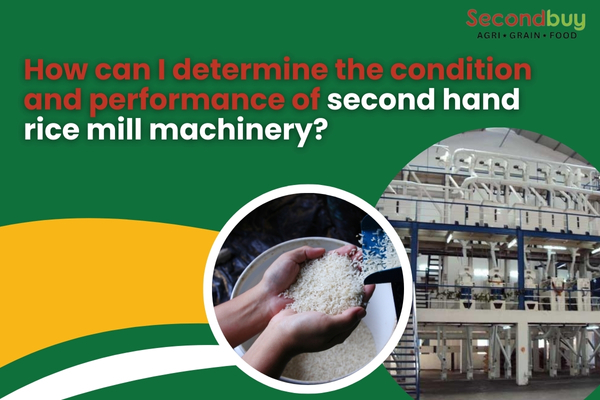How can I determine the condition and performance of second hand rice mill machinery?
In the world of rice-growing, getting used rice mill machines can be a wise game-changer. It's a pocket-friendly route for businesses to improve their work. But, checking the machine's status and how well it works needs careful attention and an ordered method. In this handbook, we check out all details of assessing used rice mill machines. This helps buyers to make smart choices using the information they've learned.
Understanding the Importance of Evaluation
Before delving into the evaluation process, it's essential to recognize the significance of thoroughly assessing second-hand rice mill machinery. The efficiency and reliability of these machines directly impact the quality and quantity of rice production, making their evaluation a critical aspect of the procurement process.
Key Steps in Assessing Second-Hand Machinery
Visual Inspection:
Begin by conducting a visual inspection of the machinery. Look for signs of wear and tear, rust, corrosion, or any visible damages. Pay close attention to critical components such as the huller, polisher, sorter, and conveyor systems.
Operational Testing:
Test the machinery to assess its operational performance. Run sample batches of rice through the milling process and observe the machinery's efficiency, consistency, and any signs of malfunction or irregularities.
Quality of Output:
Evaluate the quality of the rice produced by the machinery. Examine factors such as grain integrity, milling precision, polishing effectiveness, and sorting accuracy to gauge the machinery's performance in producing high-quality rice.
Maintenance Records:
Request maintenance records or service history from the seller. Reviewing these records can provide insights into the machinery's upkeep, past repairs or replacements, and any recurring issues that may affect its performance.
Technological Compatibility:
Assess the compatibility of the machinery with your existing setup and operational requirements. Ensure that it aligns with your production capacity, processing needs, and available space in your facility.
Expert Opinion:
Consider seeking the opinion of a qualified technician or rice milling expert. They can offer valuable insights into the machinery's condition, performance capabilities, and any potential issues or areas for improvement.
Mitigating Risks and Negotiating Terms
Once you've evaluated the second-hand rice mill machinery, it's essential to mitigate risks and negotiate favorable terms before finalizing the purchase. Here are some considerations:
Price Negotiation:
Negotiate the price based on the machinery's condition, performance, age, and market value. Be prepared to walk away if the seller's price doesn't align with your assessment or expectations.
Warranty and Support:
Inquire about any warranty or after-sales support offered by the seller. A warranty can provide added assurance and protection against unforeseen issues or malfunctions.
Payment Terms and Logistics:
Agree on payment terms, delivery arrangements, and logistics details to ensure a smooth and secure transaction.
Conclusion
By following these steps and considerations, buyers can effectively determine the condition and performance of second-hand rice mill machinery, mitigating risks and making informed purchasing decisions. Remember to prioritize thorough evaluation, seek expert advice if needed, and negotiate terms that align with your requirements and budget. With careful assessment and strategic planning, acquiring second-hand rice mill machinery can be a valuable investment, driving efficiency and productivity in rice production operations.

